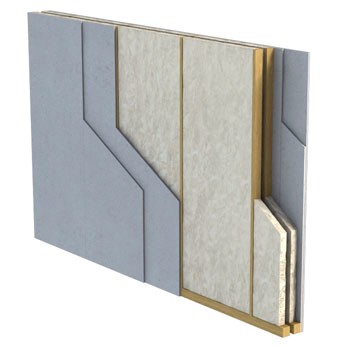Separating wall insulation
Separating walls are designed to minimise sound transmission between adjoining rooms or properties. In order to achieve the levels of acoustic insulation required by Building Regulations, it is necessary not only to ensure that separating walls are properly designed and constructed, but also to minimise flanking sound transmission through the building elements that adjoin the separating wall.
Where a separating wall exists between a room or flat and a communal area such as a corridor or landing, it must also meet certain standards of thermal performance as specified in Building Regulations. Another key requirement of a separating wall is enhanced levels of fire performance as specified in Approved Document B of the Building Regulations.
A variety of wall constructions are used for separating walls in different property types:
Timber frame
Two timber frames/stud walls are constructed and each is insulated using mineral wool in slab or roll form, which is friction fitted into the frame. Each wall is finished with plasterboard to both sides. As well as delivering the necessary acoustic performance, this method also provides excellent thermal performance.
Steel frame
Mineral wool insulation is equally well suited to use in steel frame separating walls, absorbing sound and improving acoustic performance while at the same time providing a high level of thermal separation between adjoining properties.
Masonry
Mineral wool insulation is widely used to provide acoustic and thermal insulation between masonry separating walls. In the case of new walls, the slab is fixed to one wall and a residual cavity left between this and the other wall. Where existing masonry is to become a separating wall, the mineral wool insulation is typically installed into studwork fitted to that wall.
Cavity barriers
Mineral wool insulation is also widely used for closing the external wall cavity at the junction between separating walls and external walls in order to minimise flanking sound transmission (and fire spread).
The benefits of Mineral Wool
- Value for money - more cost effective than any other material available
- Thermal performance - compression fit minimizes gaps at joints
- Acoustic performance - excellent sound absorption helps compliance with Part E
- Environmental - uses recycled material, zero ODP & GWP, BRE Green Guide A+ to B
- Fire properties - non-combustible and A1/A2 Euroclass fire rated helps compliance with Part B
- Easy-to-fit - simple installation process



